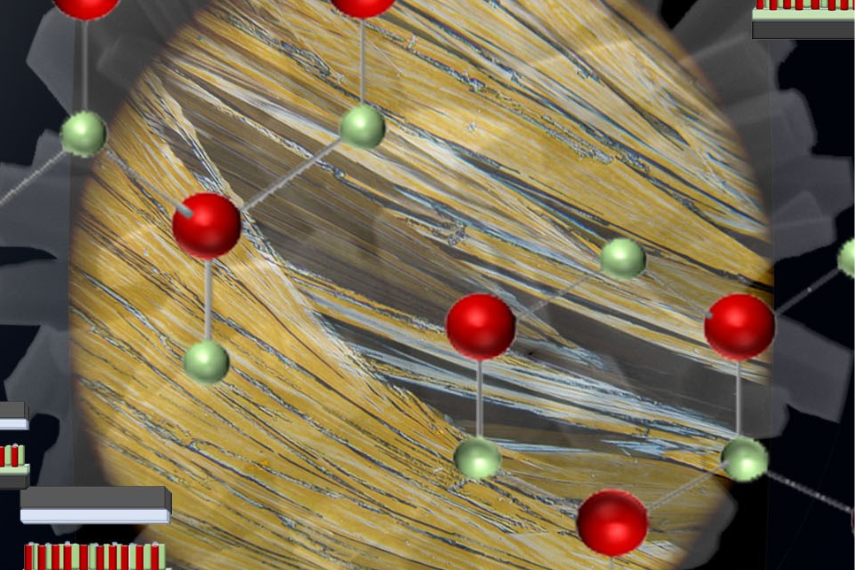Nanostructures: A Gateway to the Future

ZnO Nanostructures: Versatile Innovations. Dr. Khashayar Ghandi and his team explore applications and challenges for tailored advancements.
ZnO Nanostructures: Versatile Innovations
Nanotechnology has ushered in a new era of possibilities, revolutionizing various industries with the advent of nanostructures. Among these, ZnO (Zinc Oxide) nanostructures stand out for their versatile applications in remote sensing, photocatalysis, functional textiles, and cosmetics. Their unique properties, have propelled ZnO nanostructures to the forefront of innovation, impacting our daily lives through advancements in medical diagnostics, clean energy, and consumer products.
Challenges in ZnO Nanostructure implementation
Despite their immense potential, harnessing the full capabilities of ZnO nanostructures presents a complex challenge. Variations in synthesis processes and conditions have led to contradictory results and hindered widespread application. Moreover, the intricate interplay between specific ingredients (called reactants), a liquid to mix everything (called a solvent), and a special surface to work on (called a substrate) adds an extra layer of complexity to understanding growth mechanisms. This variability poses a significant obstacle in achieving consistent and reliable outcomes for practical use.
Advancing Nanostructure Knowledge
In a comprehensive review article, Dr. Khashayar Ghandi working on materials chemistry and sustainability and his MSc student, Breanna Clarke, studies recent advances to address the challenges and pave the way for future research. Based on the reviewed literature, they presented that standardizing synthesis methods and rigorously characterizing resulting nanostructures can provide a foundation for reproducibility. Additionally, it is illustrated a broad understanding of the impact of reaction parameters, such as solvent choice and reactant concentration, is crucial. Employing advanced analytical techniques, like UV-visible spectroscopy (a special flashlight) and scanning electron microscopy (a super powerful microscope), allows for precise control over growth conditions, enabling the production of ZnO nanostructures with tailored properties.

College of Engineering and Physical Sciences

College of Engineering and Physical Sciences
Through systematic investigation, they uncovered critical factors governing ZnO nanostructure growth. It illuminates the dominance of Ostwald ripening in the synthesis process and highlights the nuanced role of oriented attachment in the initial stages. The findings provide a roadmap for tailoring ZnO nanostructures to specific applications.
By elucidating the intricacies of growth mechanisms, this research contributes to the advancement of nanotechnology, opening doors to more efficient and reliable production methods for ZnO nanostructures. As advancements in nanotechnology continue, there is potential for cross-disciplinary collaborations that could lead to entirely new applications of ZnO nanostructures. For instance, integrating these nanostructures into emerging fields like biomedicine or energy storage could yield groundbreaking innovations.
This story was written by Kasra Ghasemi as part of the Science Communicators: Research @ CEPS initiative. Kasra is a PhD candidate in the School of Engineering under Dr. Syeda Humaira Tasnim and Shohel Mahmud. His research focus is on developing innovative solutions to poor packaging systems and conventional refrigeration methods and their contributions to food waste and global warming – a Latent Heat Thermal Energy Storage system with micro-scale capsules.
Funding Acknowledgement: This research is funded by a prestigious NSERC Discovery Grant, a financial aid designed to support innovative research in various fields of study. This grant plays a critical role in enabling researchers like Dr. Ghandi to push the boundaries of knowledge in their respective areas.
Reference: B. Clarke and K. Ghandi, “The Interplay of Growth Mechanism and Properties of ZnO Nanostructures for Different Applications,” Small, vol. n/a, no. n/a, p. 2302864, doi: 10.1002/smll.202302864.